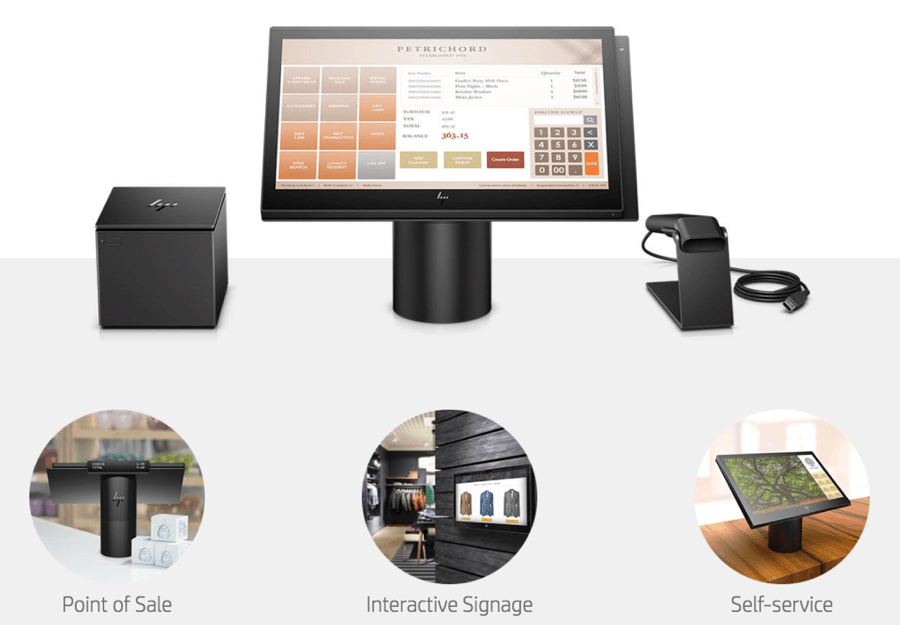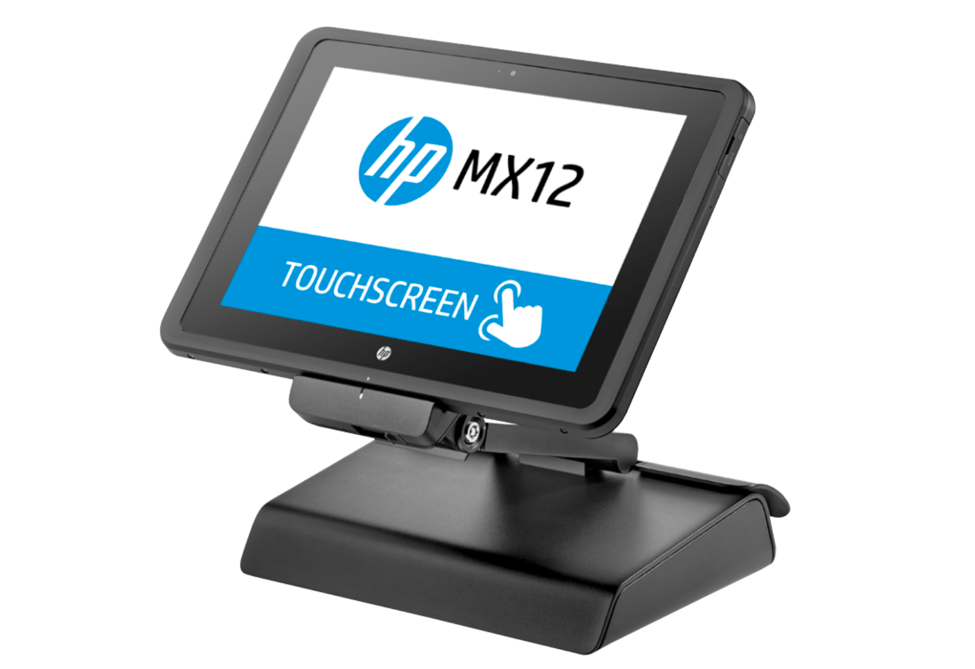Retail POS Demands Integrated, Flexible Solutions
The market for point-of-service (POS) systems is changing rapidly. Retailers are looking for a wider variety of form factors, more personalized experiences, and a unified environment that connects shoppers physically and online.
At the same time, retailers are looking for ways to lower costs, improve security, and simplify POS management. Perhaps most important, they are looking for future-proof systems that will allow them to adapt to the rapidly changing retail landscape.
To meet these needs, POS developers and systems integrators need to think carefully about their hardware, software, and partner choices. Let’s explore.
Customer Expectations Are Changing
Retailers’ escalating demands are driven by changes in customer behavior. The continued growth of online commerce—particularly mobile—is driving expectations for customer-driven transactions and rich, personalized experiences. As a result, shoppers are interested in a wider variety of touchpoints and transaction options. In response, retailers are looking for a diversity of new solutions, ranging from mobile POS to self-service kiosks (Figure 1).

Market data shows that retailers are already starting to implement these new options:
- Forrester data suggests that 40 percent to 45 percent of leading Tier 1 retailers will be refreshing their POS in the next three years
- Self-service touchpoints are expected to account for 20% of the POS market by 2022
- The mobile POS market is forecast to hit USD 48.77 billion by 2023
- Shoppers increasingly use Apple Pay, PayPal, Amazon Payments, or other smartphone-based payment methods
Hardware and Software Fragmentation
Although these diversifying POS options represent an important opportunity, they also pose significant challenges. Legacy POS systems have historically relied on components from many different vendors. This approach resulted in a fragmented ecosystem that requires fluency in multiple OSes, programming languages, tools, and connectivity options.
As POS systems become more complex and diverse, this fragmentation drives up costs. Indeed, 49% of retailers are experiencing an increase in payments IT support costs.
Fragmentation also increases the difficultly of adding new features such as remote management. Legacy POS systems may not have the processor performance, memory, connectivity, or security hooks to support them. For that matter, legacy back-end systems may not be able to support the additional features.
Also problematic is the “set and forget” mindset typically applied to POS systems. Fragmentation makes legacy POS systems brittle and difficult to maintain. As a result, a common solution is the break-fix service-level agreement (SLAs), where retailers allow systems to fail before performing any maintenance. Given that fixes typically cost between $400 and $1,200 per POS unit, the costs of support can quickly eat into retailers’ budgets.
Patching Security Holes
The brittle nature of legacy POS systems also leads to major security weaknesses. Between 2013 and 2015, 70% of data breaches started at the POS. This is likely to increase with the growth of cybercrime.
To address the growing security concerns, the Payment Card Industry (PCI) Council prefers point-to-point encryption (P2PE). Among other benefits, P2PE reduces scope, minimizing the number of systems involved in the PCI data security standard (DSS) assessment process.
But P2PE generally increases the cost of components and the complexity of deployment and management. It doesn’t protect consumer data beyond the credit card, loyalty card, or smartphone app. Thus, the security landscape itself is notably fragmented and difficult to manage.
Solve Tomorrow’s POS Problems, Today
Getting to a more unified and flexible approach to retail and commerce in general requires both integration and innovation, which Intel is providing with its holistic enterprise POS architecture (Figure 2).

The approach leverages its rich partner ecosystem, with partners including Toshiba, Fujitsu, NCR, and HP, to help reduce integration and operational complexities. With the use of a single underlying architecture, developers and system integrators get one infrastructure, one operating system, one application, and one remote management and security solution, all the way from fixed systems to mobile devices.
This unified approach resolves the problems of legacy systems. Now retailers can readily offer a consistent experience across a wide variety of touchpoints—and they can more easily integrate online and in-person experiences.
The consistent architecture also simplifies maintenance and lowers retailers’ IT costs. Case in point, Intel® Active Management Technology (Intel® AMT) can repair and protect networked devices remotely. This tech lets IT:
- Obtain keyboard-video-mouse visibility even during a critical error to remotely remediate and recover systems after OS failures. Also, out-of-band alerting and event logging help to reduce downtime.
- Save energy and time by setting specific wake-up times. This lets IT, for example, maintain scheduled updates with preset update intervals.
- Remotely power on a single system or multiple systems for remediation or patching.
- Recover faulty systems without sending a tech—even if it won’t boot.
This technology has been shown to yield approximately $170 in savings for every service call.
The unified approach also simplifies and strengthens security. Specifically, Intel offers an end-to-end (E2E) architecture. This approach builds on existing industry practices:
- Pursue P2PE for scope reduction
- Reduce dependency on payment card data
- Tokenize sensitive data for business analytics
- Deploy E2E security products, architecture
With POS systems at the front line of cyber attacks, the importance and assurance of a holistic approach cannot be overstated—particularly as systems and usage patterns change.
POS Case Study
To illustrate the benefits of this unified, consistent approach, consider the POS portfolio offered by HP. This portfolio spans the range from traditional modular POS systems to all-in-ones and mobile options.
A good example is the Windows 10-based ElitePOS System (Figure 3). Based on a 7th generation Intel® Core™ processor, the system has a high-definition 14-inch touchscreen, efficient M.2 storage, and fast DDR4 memory, with optional support for wireless LAN with Bluetooth. It’s also rugged, meeting MIL-STD 801G with a sturdy aluminum chassis.

Designed to be placed almost anywhere, the ElitePOS system’s appearance and structural flexibility allow it to serve as a digital display or as self-service kiosk in a store, or at a restaurant table. It also addresses the issue of security head-on by providing a fingerprint scanner for users to prevent unauthorized access, and it tackles reliability through the incorporation of a self-healing PC BIOS and associated firmware.
Another example is the HP MX12 retail solution, based on the HP Pro x2 12-inch tablet (Figure 4). The MX12 can be used as a mobile or fixed solution, giving retailers flexible options for their POS systems.

Like the ElitePOS, the MX12 is based on Intel® Core™ processors and Windows 10. Thus, retailers that deploy both will enjoy a highly consistent POS experience across the two form factors. This concept extends to the wider range of HP’s offerings, allowing retailers to deploy the form factors they need without the fragmentation problems of the past.
Unifying the Retail Experience
The market for POS systems is changing rapidly. As e-commerce becomes a must-have—even for midsize retailers—stores need POS systems that can unify their online and in-person experiences. Retailers are also looking for POS systems that help them deliver richer, more personalized experiences. And they are looking for a wider variety of form factors, from traditional registers to mobile POS and self-service kiosks. On top of all this, security and manageability are becoming pressing issues as transactional systems become more complex and interconnected.
By moving to a consistent architecture, developers and SIs can help retailers meet all of these requirements—and more.